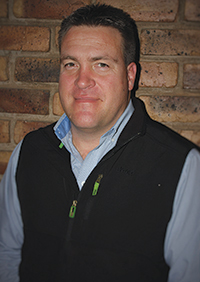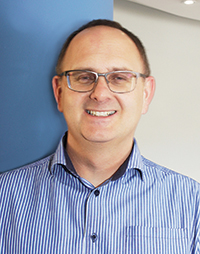

When I was asked by a colleague what the difference between horticulture and agriculture is recently, I was unable to give an intelligent answer. My guess was that horticulture is growing plants indoors, while agriculture refers more to outdoor farming. So first off, let’s get that out of the way: according to www.differencebetween.net, “horticulture strictly involves plant cultivation only while agriculture deals with cultivation of crops as well as animal farming,” so that’s the definition that will be followed for the purpose of this article.
The next question one might have is, what do these things have to do with electronics – the concepts seem antithetical to the idea of high-precision semiconductors made in clean rooms and sensitive to everything from moisture, to extreme temperatures, to corrosion.
So just what place is there for electronics in horticulture and agriculture, what roles are they serving and what is their uptake in the South African market?
LEDs light the way
One of the most popular types of semiconductor for this purpose is LEDs, as they can be designed to output a light spectrum that is specially tuned to the needs of growing plants, for indoor applications in particular.
They increase the yield of food products to cater for a continuously rising global population, by making the best use of the available land and several countries are developing indoor farming techniques. According to research conducted by P&S; Intelligence, the revenue generated in the global horticulture lighting market is expected to rise from $3,2 billion in 2019 to $20,3 billion by 2030, at a compound annual growth rate (CAGR) of 18,1% between now and then.
Europe was the largest horticulture lighting market during the historical period (2014–2019). This is because it is the largest exporter as well as producer of fruits, flowers and vegetables around the world. During the forecast period, the highest CAGR, of 21,1%, is expected to be experienced in the Asia-Pacific region, owing to its increasing disposable income and population. Further, as a result of the reducing arable area, numerous countries in the region are looking at modern farming techniques, such as indoor horticulture, greenhouse and vertical farming.

But what about South Africa, which is blessed with an abundance of sunshine and land area? “My view is that SA is perfectly placed with top-notch electronic design engineers and a good background in agricultural history, which is important when horticulturalists test different plant growing recipes,” says Michael Nel, country manager South Africa for OSRAM Opto Semiconductors. “With LEDs being a semiconductor component, our customers are generally electronic design engineers in the lighting industry that partner with universities and horticulturalists.

“Yes it is true that we are blessed with an abundance of sunlight in SA yet we see projects starting up locally and abroad. For whatever reason, if it is with or without supplementary lighting, there are still benefits for growers when they are able to control their growing environments.”
Delving into the technical details about what makes LEDs particularly suitable for this market, Nel explains that LED light spectrums are very specific, which allows one to target the absorption wavelengths needed for different plant functions. This allows for control of the light output, spectrum and photoperiod in a single luminaire.
LEDs are also small in form factor, with various secondary optic options available in the market – this combination is favourable for smaller luminaries that still maintain good spectral homogeneity. There is also a significant reduction in directional radiated heat when using LEDs compared to conventional light sources, enabling designers to cater for inter, multilayer or top lighting luminaries that can be used in close proximity to plants.
“Another aspect of LEDs that customers favour above conventional light sources is the failure mode: LEDs lower their light output during their lifetime and light degradation can be calculated and considered early in the design of a lighting solution. Conventional light sources have a total failure at the end of their lifetime and the point of failure cannot be calculated. So there is uncertainty in the estimation when such a light source has to be renewed,” explains Nel.
OSRAM Opto Semiconductors offers a diverse range of horticulture LEDs to meet customer specific requirements, ranging from the shorter wavelengths in deep blue to the longer wavelengths in far red. “We have compatibility in our professional range with Oslon and QsconiqP2226 parts, with Duris S5 covering the commercial range. We also have various compatible white LEDs in these ranges that can be incorporated for better work environments,” Nel says.
The role of the IoT
Altron Arrow mainly supplies components to the electronics industry and a few of its customer are designing and manufacturing local units for this market, according to engineering manager, Gyula Wendler. It also supplies Libelium and Monnit as more completed plug-and-play solutions which are aimed at the smart farming vertical market.
Libelium manufactures hardware and a complete software development kit for wireless sensor networks. In its SmartFarming solution, it has 19 high-performance sensors for the most exigent field applications such as vineyards, fruit orchards and greenhouse cultivations, among others.
Monnit is a pure-play wireless sensor-based solution provider for the Internet of Things (IoT). Monnit’s 70+ sensor types can keep an eye on operations, crops and livestock easily and economically as all its sensors are interoperable and have long battery life.
For applications like the Libelium products that sit out in a field and measure things like moisture and pH levels, two of the most important technical features are battery life and IoT communication. “One of the key features is to ideally not have wires to sensors. This means wireless sensors are in bigger demand. This then brings battery life into the equation as high on the priority list, followed then by the range and reliability of the wireless sensors. The actual protocol seems less important as long as it’s reliable. A lot of the sensors are also not rugged enough for the farming environment, so this is an important consideration too. Of course cost is always an important factor,” Wendler says.
He says the local market has been slow on taking up these technologies however. “There have been quite a few enquires for projects in this environment and quite a few proofs of concept, but not many go into full implementation. The cost of the sensor equipment is often one of the hurdles, especially for imported products, so locally produced solutions should have a better success rate. Also, the security of the sensor is often an issue as vandalism seems to be an issue in many of the areas.
“Smart farming using IoT is still very much in its infancy locally. However, with a population that is growing and resources being limited, smart, efficient use of the water, land and other resources will be needed so IoT in this space will become increasingly important. I believe there is huge potential for locally developed products.”
For more information contact
Gyula Wendler, Altron Arrow,
| Tel: | +27 11 543 5800 |
| Email: | [email protected] |
| www: | www.technews.co.za |
| Articles: | More information and articles about Technews Publishing |
| Tel: | +27 11 923 9600 |
| Email: | [email protected] |
| www: | www.altronarrow.com |
| Articles: | More information and articles about Altron Arrow |

© Technews Publishing (Pty) Ltd | All Rights Reserved